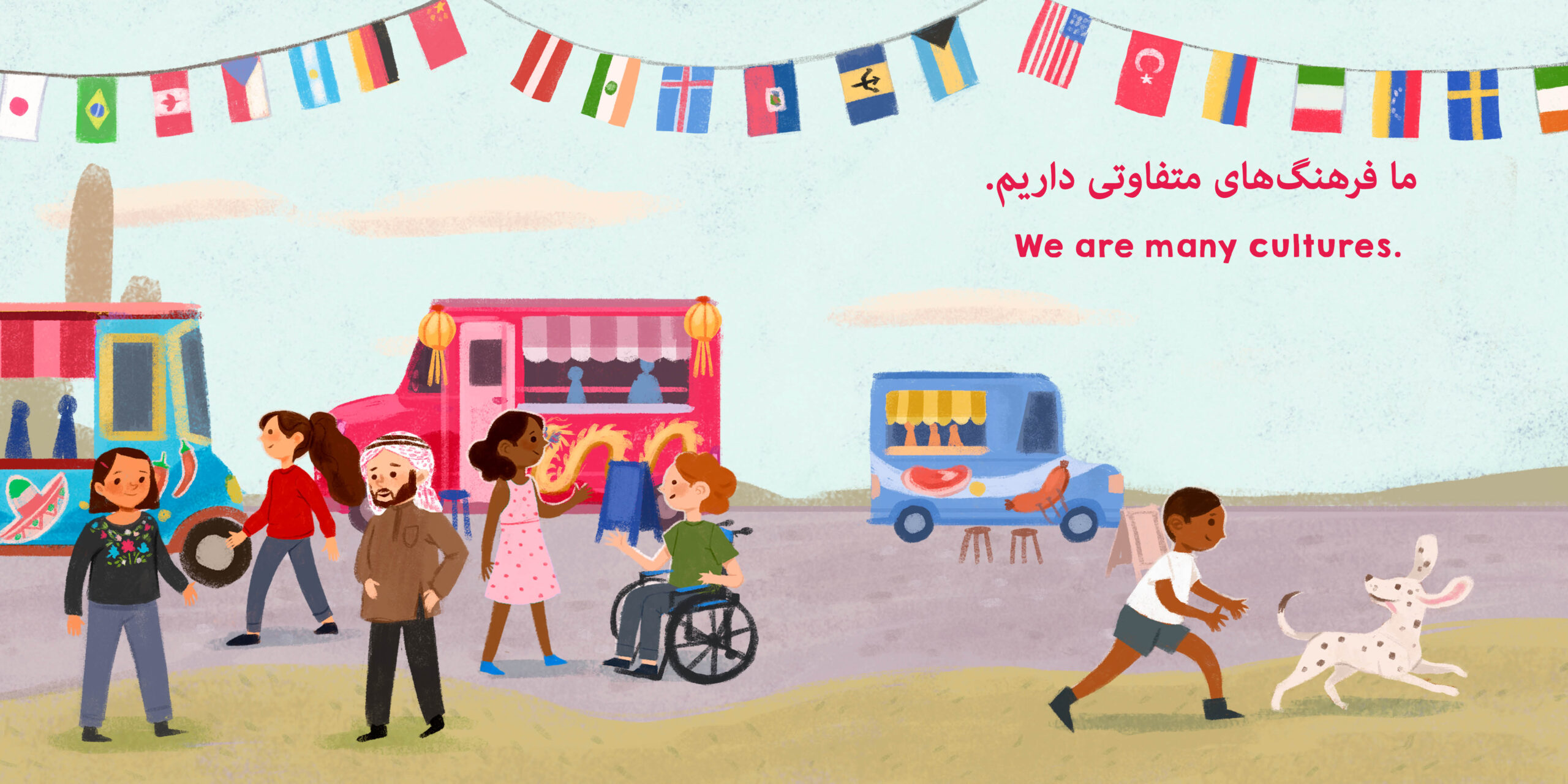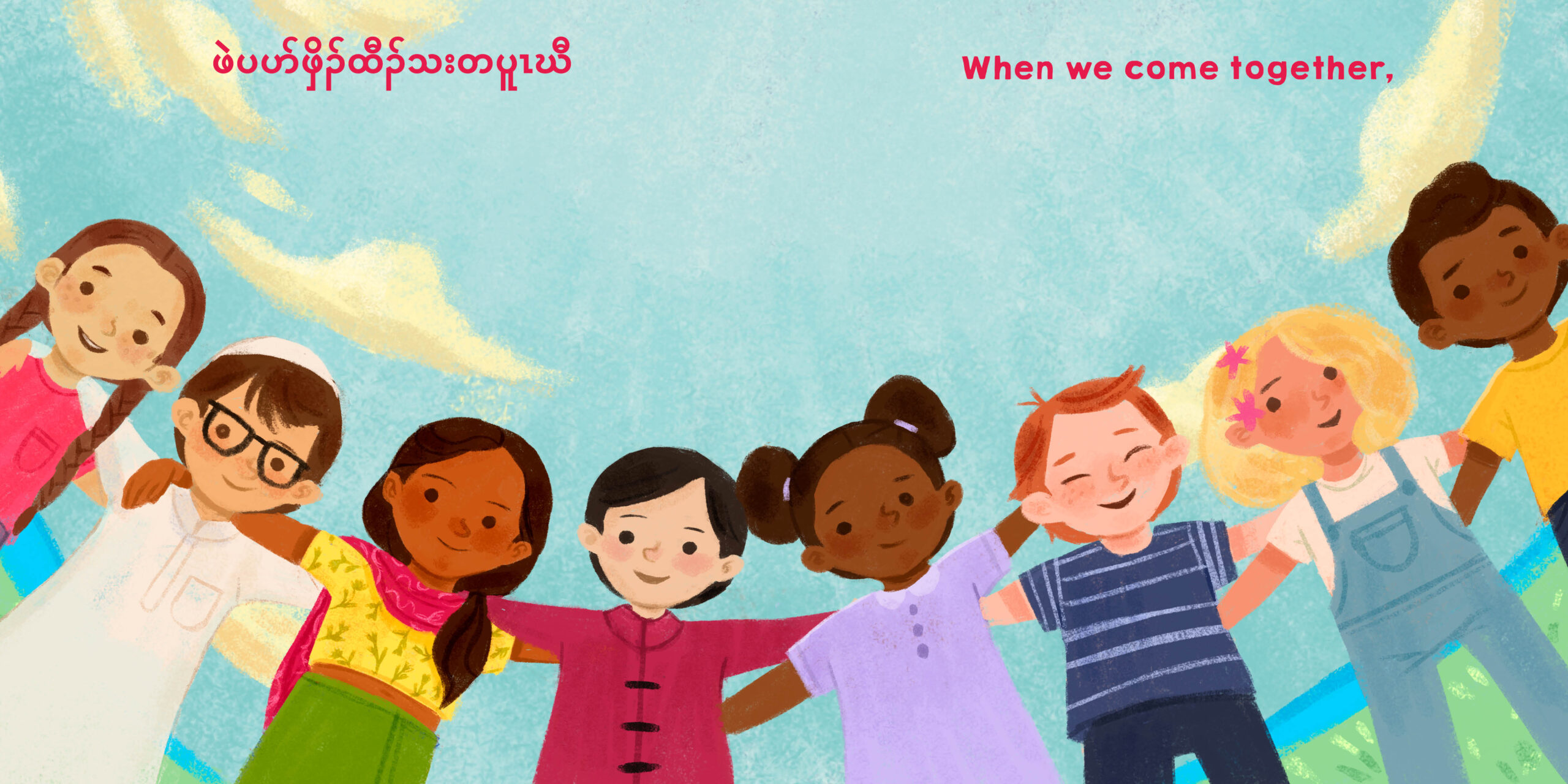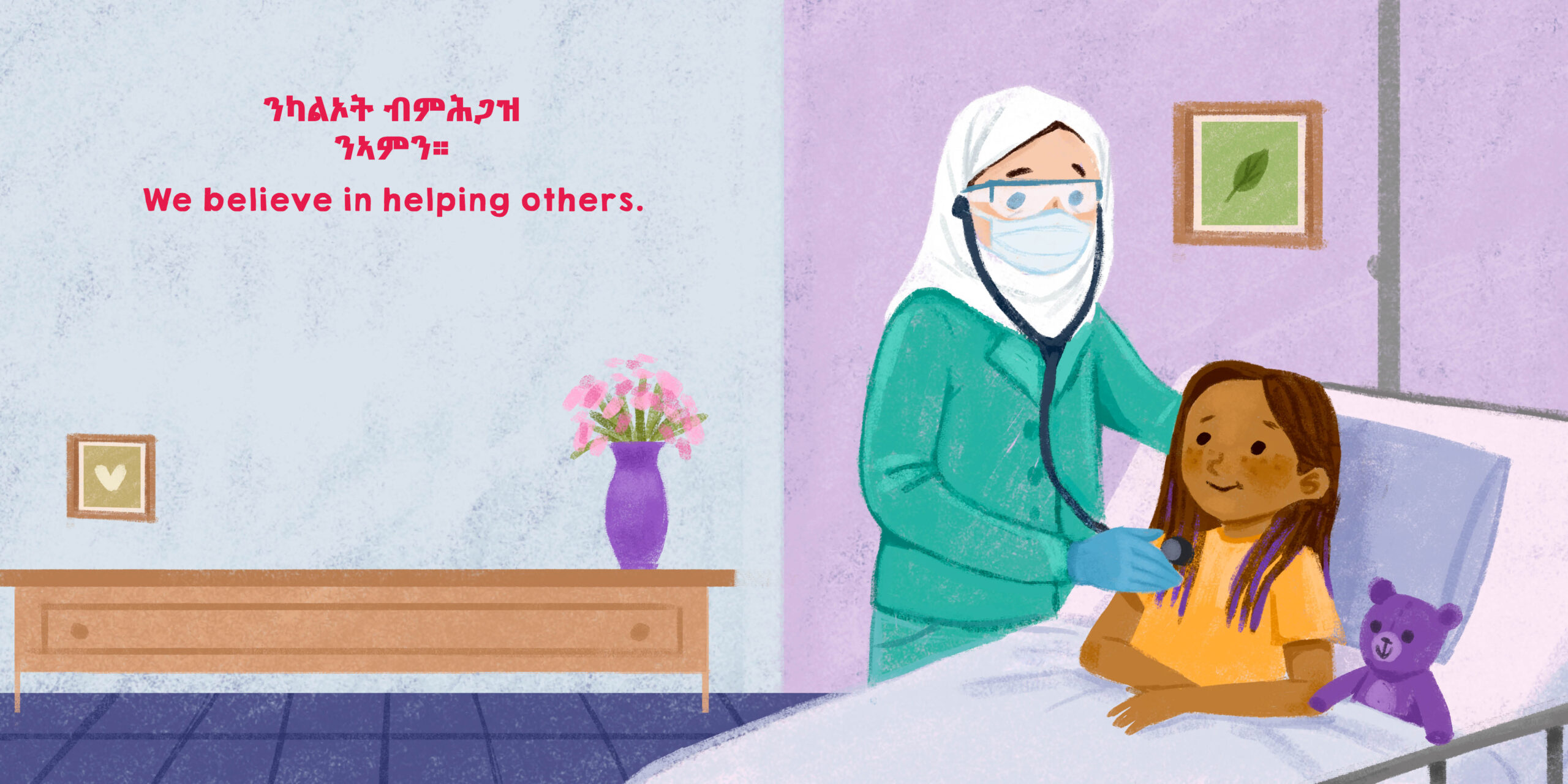 nside excerpt from Language Lizard’s bilingual book Who Are We?
nside excerpt from Language Lizard’s bilingual book Who Are We?Language Lizard is partnering with World Kid Lit to talk about world literature for young readers. This collective of volunteers is dedicated to sharing fiction and nonfiction from aroun the world! Today, we’ll talk about why that is so important.
What is #WorldKidLit?
In 2016, literature experts Marcia Lynx Qualey, Lawrence Schimel, and Alexandra Büchler held their inaugural World Kid Lit Month event. The #WorldKidLitMonth celebration makes it possible for English readers to discover fiction and nonfiction stories from around the world. By translating these multicultural perspectives, #WorldKidLitMonth allows kids and teens to investigate how and why books get published in different countries and in different languages, but not others.
This event takes place every year in September because it is considered National Translation Month in the United States. It is also the time of year when students return to school and renew their excitement to learn about new people and places.
Why should we #ReadTheWorld?
fdsfs Reading can transport us around the world, to a different time period, or even into a fantastical landscape. This is the magic of literature. However, when we only expose ourselves to books written in our language or published in our country, we unknowingly put a limit on that magic. Here are three reasons why we need to challenge ourselves to find new stories.
1. Be a Global Citizen
When we read stories published in only one language or from only one country, it creates a false impression of the world at large. It can create a sense of “otherness,” or an “Us vs. Them” mentality. The reality is that we live in multicultural communities, and our population is getting more diverse each year.
If we want our children to truly succeed and flourish as global citizens, it’s essential that they understand and celebrate diversity. By building empathy with diverse books, we can weaken the idea of “otherness,” and increase our compassion. Cooperating as global citizens with other countries is especially important in the face of global issues.
2. Build Empathy
Kids are inherently self-centered. They gradually learn empathy in order to have meaningful connections with other people. Researchers believe empathy may be the key to having a joyful life because it leads to better relationships at home, school, and eventually work.
The tricky part is, you can’t really teach empathy like you would teach a kid to ride a bike. It is something that must be modeled, nurtured, and kindled. Empathy is more than simply understanding another person’s point of view. Empathy involves understanding, respecting, and placing value on another person’s perspective.
Diverse books build empathy because they immerse kids in the places and experiences of people very different from themselves. They help them to understand another person’s life, thoughts, and values. By simply turning a page, young readers can expand their appreciation of different cultures.

3. See Yourself
Stories touch us most when we see ourselves reflected in the characters. Until very recently, the vast majority of characters in children’s books were white, largely because of what’s known as the “publishing diversity gap.” As recently as 2014, only 10% of children’s books featured non-white characters. This, in spite of the fact that by 2060, almost two-thirds of American children will identify as a non-white ethnicity.
It can be disheartening for students to read a never-ending stream of stories that feature characters to which they can’t relate. Students in diverse classrooms get a boost of self-esteem when they read or hear books in which their cultures or ethnicities are represented and celebrated. It creates a sense of pride when we see parts of our own life on display.

How Can You Celebrate #WorldKidLit Month?
Whether you celebrate in your classroom or at home, you can start with a reading tour of the world. The majority of books that are published in translation are from countries in Western Europe, so challenge yourself to read translated works from other parts of the world.
Once you’ve selected a few books, you can share what is on your shelf with a #shelfie! Take your opinions to the online community and review some of the books you decide to read. You can also watch “World Kid Lit Live!” where authors, translators, publishers, editors, and other literary professionals come together for an online discussion.
As we gear up for the new school year, it’s time to get excited about translated books from around the world! Happy #WorldKidLit Month!
